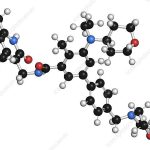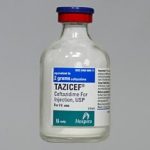What Is the Difference Between Angiogram and Angioplasty?
Angiogram and angioplasty are procedures used to treat or assess blood vessel issues.
Learn more about the similarities and differences between angiogram and angioplasty, and why your doctor might recommend these procedures.
What is angiogram vs angioplasty?
These procedures can work separately or together and are essential for diagnostic testing and treatment.
Angiogram
An angiogram is a diagnostic procedure that creates images of blood vessels. It involves using contrast dye to reveal blood flow and blockages. The dye is injected through a catheter inserted into the femoral artery in your leg.
Types of angiogram procedures include:
- Coronary angiogram
- Aortic angiogram
- Pulmonary angiogram
- Cerebral angiogram
- Peripheral angiogram
- Renal angiogram
You may also have a CT angiogram (CTA) or an MR angiogram (MRA) without contrast dye.
Angioplasty
Angioplasty is a procedure that opens or unblocks a blood vessel to improve blood flow. It involves inserting a catheter with a balloon into the affected artery and inflating it to compress the blockage. A wire-mesh stent may also be inserted to prevent artery collapse.
Types of angioplasty procedures include:
- Coronary angioplasty
- Cerebral angioplasty
- Renal artery angioplasty
- PTA of the femoral artery
- Balloon pulmonary angioplasty
- Carotid artery angioplasty
Some cases may require laser angioplasty to remove the blockage.
What are symptoms leading to angiogram vs. angioplasty?
Doctors recommend angiogram or angioplasty based on specific health symptoms, especially those related to blood flow restrictions.
Angiogram
- Chest pain
- Unexplained pain in jaw, neck, or arm
- Shortness of breath
- Severe headache
- Severe dizziness
- Double vision
- History of stroke or heart attack
- Failed stress tests
- Possible blood clot or blockage
- Possible brain tumor
Angioplasty
- Regular chest pain
- Regular shortness of breath
- More than 50% blockage in a main artery
- More than 70% blockage in a branching blood vessel
- Coronary artery disease, carotid artery disease, peripheral artery disease, or atherosclerosis
What are potential side effects of angiogram vs. angioplasty?
Both angiogram and angioplasty have potential side effects and risks. It’s essential to discuss them with your doctor.
Angiogram
Potential side effects include:
- Soreness
- Bruising
- Blood leakage at incision site
- Nausea or itching from the dye
Complications may include:
- Catheter-related damage to blood vessels
- Allergic reaction to the dye
- Heart attack or stroke
- Kidney damage from the dye
- Infection at wound site or inside blood vessel
Angioplasty
Potential side effects are the same as angiogram. Additional complications may include:
- Blood clot near or inside the stent
- Restenosis (re-narrowing of arteries)
Procedure and duration of angiogram vs. angioplasty
Although there are similarities, both procedures differ due to their specific purposes.
Angiogram
The procedure involves sedation and local anesthesia. A doctor makes a small incision in the groin region, inserts a catheter into the artery, and moves it to the area of examination. Iodine dye is injected to visualize blood flow, and x-ray images are taken.
The duration of an angiogram varies depending on location and findings. It can range from 15 minutes to several hours. An angiogram is usually an outpatient procedure.
Angioplasty
An angioplasty begins the same as an angiogram. A catheter with a balloon is inserted, and the blockage is compressed to improve blood flow. In some cases, a stent is also placed.
The duration of an angioplasty depends on the type and complexity and can range from 30 minutes to several hours. Hospital stays are common for monitoring after the procedure.
IMAGES
Recovery time of angiogram vs. angioplasty
Recovery begins immediately following both procedures, with a slightly longer hospital stay for angioplasty.
Angiogram
After an angiogram, you may experience soreness, bruising, and limited activity for a week.
Angioplasty
After an angioplasty, you can expect to be discharged within 12 to 24 hours. Soreness and limited activity are advised for about a week.
Recovery times vary. Contact your doctor or seek medical help if you experience any severe side effects or complications.
Sources:
– Society for Vascular Surgery: "Angiogram"
– Stanford Health Care: "Angioplasty"
– Diagnostic and Interventional Radiology: "Laser angioplasty of peripheral arteries: basic principles, current clinical studies, and future directions"
– Society for Vascular Surgery: "Angiogram and angioplasty – what you need to know"
– Mayo Clinic: "Coronary angioplasty and stents"
– National Health Service: "Risks – Angiography"
– Alberta Health Services: "Angiogram: What to Expect at Home"
– Alberta Health Services: "Percutaneous Coronary Intervention: What to Expect at Home"
– Alberta Health Services: "Percutaneous Coronary Intervention: What to Expect at Home"


